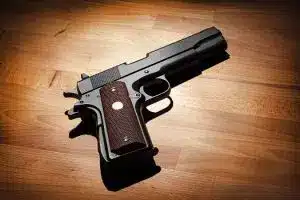Almost any firearm can be considered safe as long as the individual using it knows how to handle and use it properly and responsibly. When we shift the focus to handguns, pistols and revolvers are two of the more popular options. The main difference is a pistol has a fixed chamber, while a revolver has multiple rotating chambers. Below, the firearms education professionals from Online Texas LTC, a premier Texas CHL class provider, look at the various factors that apply to safety with pistols and revolvers.
Training and Use
There’s not as much training and practice needed to correctly and safely use a revolver compared to what’s typically recommended with pistols. This tends to make revolvers safer for newer or less experienced firearms users. Revolvers generally do take more training and practice to shoot accurately, compared to semi-automatic pistols. This is due to the longer and stiffer trigger pull of a revolver.
To be fair, not all pistols take more time to learn how to use correctly and comfortably. However, this can be the case with semi-automatic models, but not necessarily with single-shot pistols. Also, there are many options to consider with pistols today compared to what’s common with revolvers. This can make it a bit more challenging to find one that’s right for your needs, current capabilities, and general comfort level. Revolvers, on the other hand, are either single- or double-action.
Negligent Discharges
This one is pretty much even, since newer revolvers have firing pin blocks that prevent negligent discharges after accidentally dropping the gun. Newer pistols have similar protective features that minimize the risk of injury from negligent discharges. The one notable exception is older revolvers. If dropped with the hammer down, an older revolver can go off and present serious safety risks.
Misfires
Misfires can present safety risks when you need to have the ability to quickly fire. For situations like this, revolvers can be considered safer, since all you’ll have to do if a misfire occurs is rotate to the next chamber. With a pistol, the defective cartridge needs to be ejected first.
Reloading
The ability to reload rapidly can become a safety issue under certain circumstances. In this instance, pistols are generally considered easier to reload than revolvers. That said, once you get the reload process down, it’s usually not too difficult to quickly reload a revolver. However, reloading magazines into a pistol will still be the fastest and easiest option.
Recoil
“Kickback,” or recoil, can be a safety issue to some extent. If it happens on a fairly regular basis, you may end up with soft tissue strain or stress and similar injuries. Recoil generally depends on the caliber and size of the firearm. However, revolvers are typically heavier than pistols, and they usually have larger calibers. For these two reasons, a revolver can produce more noticeable recoil.
Home/Self-Defense
Both pistols and revolvers can be reliably used for home or self-defense if you’re familiar with the loading and firing process. However, the simplicity of the revolver’s design generally makes it easier to use in stressful situations. Also, it’s practically impossible for a revolver to jam, unlike what’s possible with a semi-automatic pistol.
In the end, both types of modern handguns are safe with proper training and practice.
Whether you own a pistol or revolver, make sure you have the proper training to use and care for it safely. Reach out to the firearms education pros from Online LTC for the highest-quality training available. If you need outstanding safety training or you want to take a top-notch LTC class, call us today at 512-675-2206.





